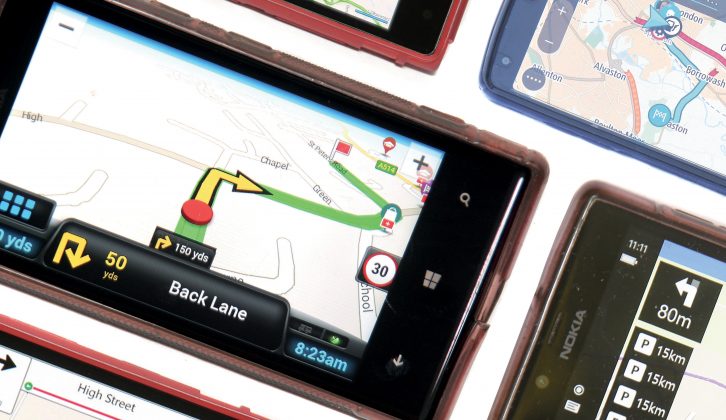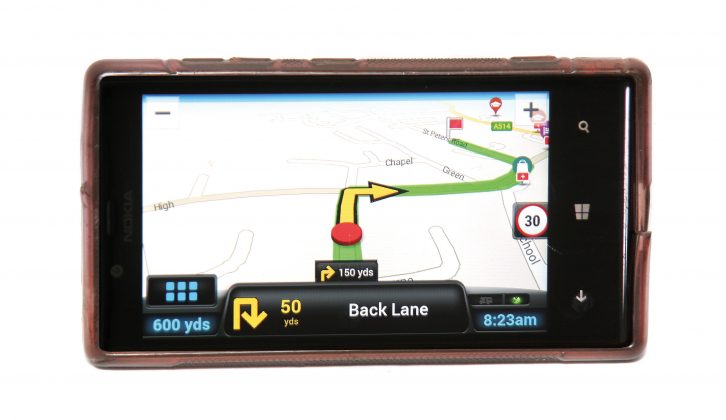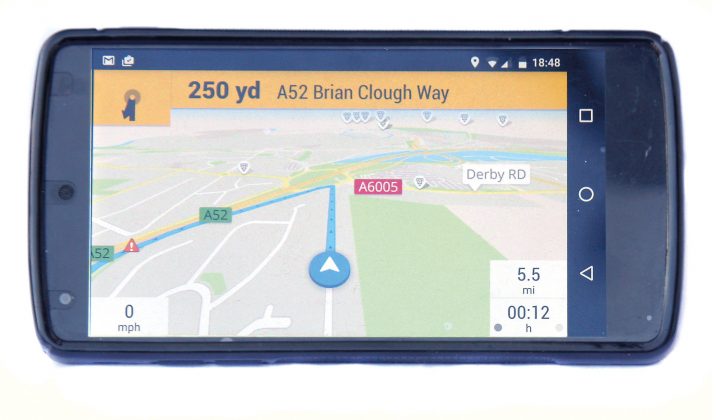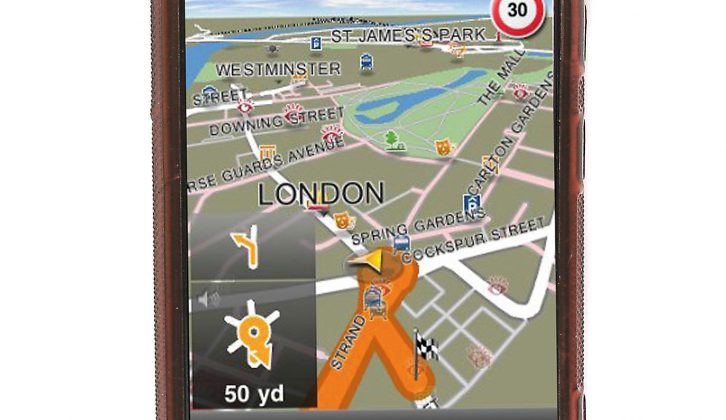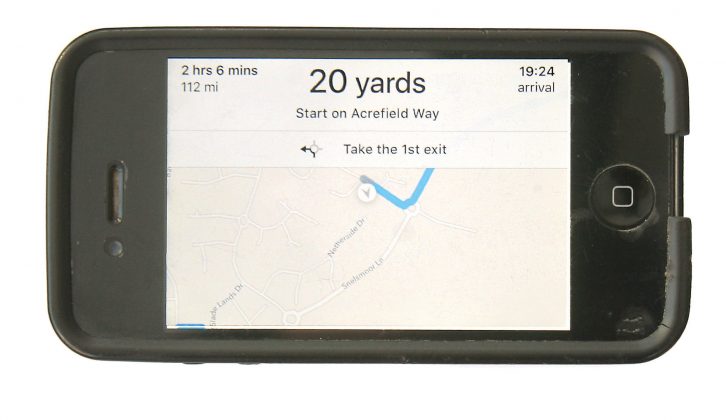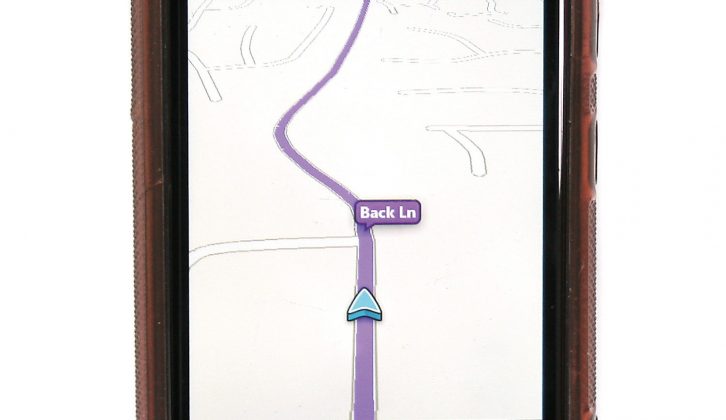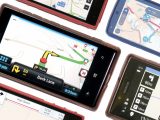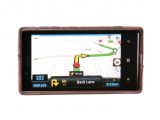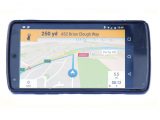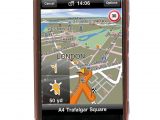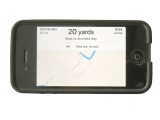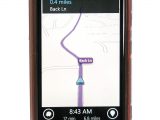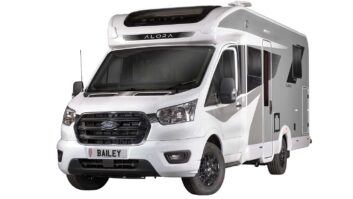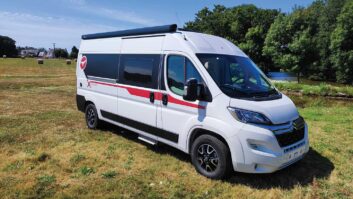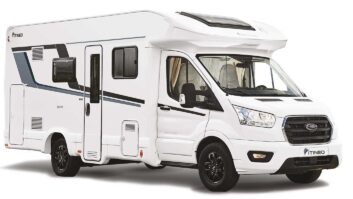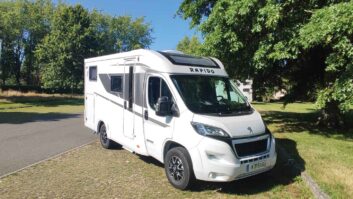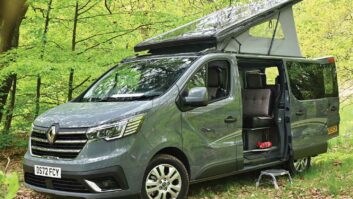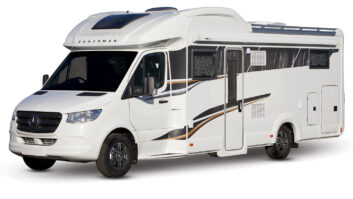Getting away from it all in your motorhome is a delight, so it would be a shame if the size of the vehicle meant staying on campsites close to motorways. I’m sure all motorhome owners have had the odd occasion when they’ve regretted taking a road that turns into the narrowest of country lanes. And the thought of scraping – or removing – the top of your ’van on a low bridge is the stuff of nightmares!
Fortunately, armed with a good sat-nav you can head into the wilds with confidence, relax and enjoy your motorhome adventures without the stress. Unfortunately, most motorhomes do not come with built-in sat-navs.
Where there’s a need, someone will be quick to spot a sales opportunity and come up with a solution, and the car satellite-navigation system manufacturers soon came up with sat-navs for larger vehicles such as lorries, motorhomes and trailers. The best devices take your motorhome’s weight, height and other dimensions into account to come up with the best routes for your motorhome’s size. One of them is the well known Snooper Ventura sat-nav, and another is by Garmin, while TomTom tried getting into the leisure vehicle accessories market briefly, before withdrawing.
While traditional sat-navs for cars have come down in price, thanks to the competition between rival brands, the niche models designed for motorhomes remain more expensive. For instance, the cheapest traditional motorhome-friendly, entry-level Snooper Ventura costs around £299. So, it’s definitely worth considering using a budget alternative to the traditional sat-nav!
Is there a cheap sat-nav available that will do the job? Yes – and you already know how to use it! The smartphone-based sat-nav app is slowly making the original sat-nav devices extinct, for several good reasons. Why pay for a separate processor, sat-nav receiver, memory and high-definition touchscreen, when your existing smartphone already has all of them?
In fact, in many cases, a decent phone’s screen is bigger and more detailed than all but the most premium standalone sat-navs. And you can buy after-market device mounts so that you can attach most mobile phones to the windscreen. So, you might reason, by cutting out the cost of the hardware, I only have to pay for the maps and program? Well, maybe. Some sat-nav apps do cost money, while others are absolutely free to download and use.
So, how reliable is a phone-based sat-nav app? Unfortunately there’s not a definitive answer. You’re the person who is the best judge of your mobile phone. Does it freeze when doing simple things such as sending text messages or surfing the web? If so, it won’t make a brilliant navigation device. But if you have a reliable smartphone with an unlimited data allowance, it should handle sat-nav duties with ease.
Technically, there’s a solid argument for using phone-based navigation systems, too, because as well as using GPS, it also factors in proximity to mobile emitters as a secondary positioning source.
The best way to find out if your smartphone is up to the job is to try it! With so many free sat-nav apps available, there’s nothing to lose even if you end up deleting the app again.
So, how did we judge the phone apps in this test? To start with, we tried each one extensively and rated it for ease of use, how well the various navigation screens worked, how extensive the ‘points of interest’ sections were, plus other necessities such as sensible routing, fast re-routing if you go wrong, and overall accuracy.
We preferred sat-nav apps that allow you to avoid a particular road or part of the route. This feature comes into its own if you want to make a detour to avoid a traffic problem. Being able to tell the sat-nav what you’re doing is so much better than the alternative of picking other roads randomly and the system desperately trying to take you back to the road you’re trying to avoid.
One problem that is peculiar to phone-based sat-navs is whether the app can work offline or not. Some simply download the maps as you drive, which isn’t a great way of doing things. As well as bumping up your mobile phone bill, it also means that you can lose navigation completely if you enter a large area with no data signal.
Other apps, like standalone devices, store mapping data in your phone’s memory. Note that all sat-nav apps use a live connection to some degree, for traffic and hazard data updates. But sat-nav apps with offline maps will work without a signal, though you will lose those traffic alerts for a while.
Finally, we want to make sure that when you’re driving your motorhome you won’t follow your sat-nav app into a normal-looking road that suddenly narrows to 6ft wide and single-track. So we obviously prefer applications that are tailored for large vehicles, such as motorhomes.
CoPilot Caravan, £49.99 – Five stars – Practical Motorhome winner!
CoPilot comes in free, Premium and Caravan guises, with the latter taking your motorhome’s width, height and weight into consideration when formulating routes.
Note that CoPilot Caravan is compatible with iOS and Android smartphones only, whereas both the free package and CoPilot Premium are also available for Windows devices.
CoPilot has really become the sat-nav app to beat, and it’s not hard to see why when you try it. It performs as well as the really expensive stand-alone sat-navs, offering a wealth of features as standard, that would normally cost you a lot.
Not only is it feature-rich, the CoPilot Caravan sat-nav app is also easy to use. The excellent mapping screens are well designed and communicate plenty of information with ease.
The CoPilot Caravan, costing £49.99, is the only sat-nav app to gain a five-star rating, and it’s Practical Motorhome‘s winning sat-nav app in 2016!
Waze, free – Four stars
Think of a bizarre cross between a sat-nav system, Facebook and Twitter, and you pretty much have Waze. That’s because all of the live data – which the app displays on the map, and routes around if necessary – comes from other road users. Crowd-sourcing at its best! Not only are hazards and obstructions all reported, but the detail given is also often unprecedented; there’s even a list of nearby fuel stations with pricing information.
Better still, all of this is free and available for iOS, Android and Windows devices.
The biggest drawback wit Waze is that it’s a live-only app, which means it somewhat hammers your mobile account data usage, and becomes iffy in areas of poor data signal.
Scout, free (single country) up to £14.99 – Four stars
This is another app that is perhaps better known by its old name: Skobbler. But in stark contrast to another rebrand, Navmii, Scout favours top-notch traffic and speed camera data from market leader INRIX. Naturally this incurs a cost, but there is a wealth of live information and map options to select. You can always continue using the basic app, with a single country map, for free, or you can pay menial sums for extra city maps, information, and country maps. It works out far cheaper, and infinitely more practical, to splash out £14.99 and get everything – taking the price into TomTom sat-nav app territory. But, unlike TomTom, this app is also usable on Windows-compatible smartphones.
Apple Maps, free – Three stars
Maps was one of the few recent Apple products that simply didn’t deliver when it first came out, but newer versions make it a more accomplished rival to Google Maps. In many ways the two apps are very similar, catering for a wide range of users and options. This means that more motoring-orientated sat-nav apps, such as TomTom or CoPilot, still have plenty to offer drivers. And what about the Apple vs Google debate? Well, if you don’t own an iPhone, then Apple Maps isn’t an option; and even if you do, it’s probably worth having both downloaded. Because, while Google Maps takes the lead for general and in-vehicle navigation, Apple Maps comes into its own when negotiating routes by public transport in unknown cities while you’re away on tour.
Navigon Mobile Navigator Europe, £61.79 – Three stars
Navigon. Never heard of it? How about Garmin? Well, Navigon is now part of the Garmin group, so it wouldn’t be unreasonable to expect this app to be polished, beautifully presented, and completely obvious to use – just like Garmin sat-navs. And here’s the thing: it is.
Navigon Mobile Navigator Europe is a stunning-looking app, which even makes the often-very-pretty TomTom screens look a little plain. But gloss aside, this really does not offer much more than TomTom, CoPilot or even some of the better freebies. Okay, in some European cities it’ll locate and route you to free parking spaces. But, personally, we’d rather pay a tenner less and have CoPilot’s motorhome-friendly features.
Navigon Mobile Navigator Europe is available for iOS, Android and Windows.
Happy touring!
Not only is it feature-rich, the CoPilot Caravan sat-nav app is also easy to use
